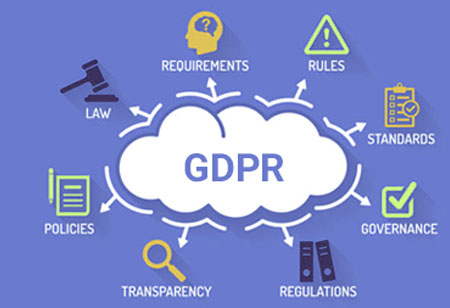THANK YOU FOR SUBSCRIBING
Preparing for the Security Threats of the Future
Policies and compliance are key factors contributing to the coordination of organizations with business plans. Policies are becoming more important now that the EU GDPR is in a position to do so. GDPR emphasizes the importance of data protection...

By
Apac CIOOutlook | Tuesday, February 12, 2019
Stay ahead of the industry with exclusive feature stories on the top companies, expert insights and the latest news delivered straight to your inbox. Subscribe today.
Policies and compliance are key factors contributing to the coordination of organizations with business plans. Policies are becoming more important now that the EU GDPR is in a position to do so. GDPR emphasizes the importance of data protection policies to safeguard the data of an organization. The GDPR principles include data management and individual rights, thus protecting the rights of the consumer. The data encryption policies help companies reduce the likelihood of data breaches and thus reduce the risk of future penalties or fines.
Hackers usually target big companies and their cyber policies to understand the GDPR laws that a company adapts and know about the nature of fines and regulations imposed by the Information Commissioners Office (ICO). When the hackers attack the company’s data, they demand some amount of money from the company by showing the copy of the company’s data to convey them they are hacked.
Check out: Top Unmanned Security and Safety Tech Companies
The company only has two choices either to pay money to hackers as much they demand or pay fine to ICOs depending on the company’s annual turnover. When the company prefers to pay fine for the ICO, hackers make use of sensitive data for other business purposes, and they sell it to marketers. But most of the time companies prefer to pay fine to hackers not to show the company’s weak security management.
Now, cybercriminals are going a step ahead in hacking by making use of chatbots to hack the personal information of victims. With chatbots, they show quick popup links that show download files and sharing private information options, and with that, they collect sensitive information of the user.
Attackers at the initial stage are trying to experiment with the text-based chatbot to attack the victims. And in the future days, they are planning to build human voice-based chatbots to attack victims over voice connection or mobile device.
Machine learning technology helps organizations to protect from cyber threats. It helps security analysts by predicting the behaviors of viruses or malware. To identify the fragments of evidence, machine learning makes use of algorithms at the initial stage of attacks. The IoT growth indicates as a risk to the enterprises mainly with the fastest network for the coming generations, that is 5G. Organizations should be prepared and be aware of the ever-increasing threats, invest more in security policies, and other necessary precautions to safeguard their sensitive data.
See Also: Enterprise Security Magazine Europe





